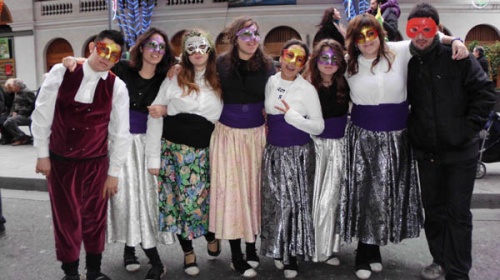Esbart Santa Eulàlia
The Esbart Santa Eulàlia originated in the Carme parish, in the city's Raval neighbourhood, in 1952. A few years later they merged with the Esbart Sant Pau, from the Sant Pau del Camp parish. The new group kept the name Esbart Santa Eulàlia, and devoted themselves to performing the traditional dances they had revived, along with some new ones.
Unfortunately, a fire in the Carme parish burnt their wardrobe and much of the material they kept there. As a result the group was wound up at the beginning of the 1970s. And they didn't start up again until another set of dance couples came on the scene in 1991.
This marked a new beginning, with new criteria and new ideas on reviving the traditional dances and customs of Barcelona and the Raval neighbourhood. It was when the Carme festival was re-established and the "Ball de Santa Eulàlia", a dance based on a score the folklorist Joan Amades included in his book Costumari català, was revived. The "Ball de Santa Eulàlia" uses plastic figures to represent some of the torments suffered by the saint, similar to the mummery in the Passion of Christ.
This dance is dedicated to the city's patron saint and performed during the St Eulàlia festivities – included in the city protocol – as well as at some community centres in the city.
The Esbart Santa Eulàlia gave rise to the Bastoners del Raval, which means these traditional and stick-dance groups share their members. They also belong to a local association that promotes Catalan culture, the Associació Institut Promoció de la Cultura Catalana.




